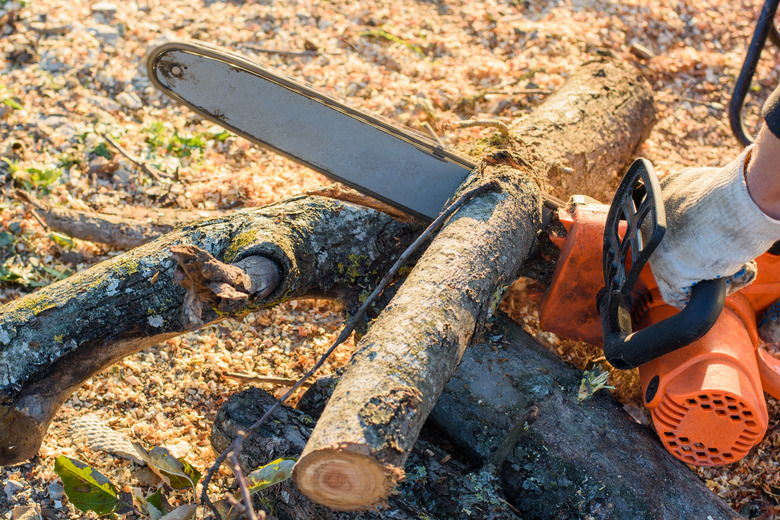How To Adjust A Husqvarna Carburetor
We may receive a commission on purchases made from links.
Is your Husqvarna chainsaw smoking or stalling when you try to cut or performing erratically? If so, you can probably improve matters by adjusting the Husqvarna carburetor. Although the carburetor was factory adjusted when the saw was new, it's common for the adjustment to slip when you use the saw, so you should know how to restore it. The procedure is the same as it is for most gas-powered chainsaws, so this knowledge will stand you in good stead when you use another model.
When you adjust the carburetor, you're regulating the mixture of gas and air in the carburetor. If the mixture is too rich, which means there's too much gas, combustion is incomplete, and the chainsaw smokes. If the mixture is too lean and there isn't enough gas, the saw will race, which can damage the engine, and it will be underpowered. When the mixture is extremely rich or lean, the saw won't run at all.
Three Adjustment Screws
Three Adjustment Screws
If you look on the motor housing right next to the pull rope, you'll see three adjustment screws usually arranged in a triangle with two next to each other and a third right above them. These are the screws for adjusting the carburetor, and while you might be able to turn them with a flat-head screwdriver, it's easier if you use a carburetor adjustment tool. Be sure to purchase one designed for Husqvarna engines; your Craftsman tool won't work.
The screws are marked L, H and T. The letter L stands for low speed, and this screw regulates the fuel mixture when the chain is turning slowly. The letter H stands for high speed, and this screw regulates the mixture when the saw is running at full speed, and you're actually cutting something. The T screw regulates the mixture when the chainsaw is idling. All three screws have to be properly adjusted for the saw to work properly.
Method for Adjusting the Carburetor
Method for Adjusting the Carburetor
For a proper adjustment, you start with the L screw, then move on to the T screw and finish with the H screw. The saw should be on a flat surface, and you should have easy access to the screws. Do not set the chain brake because you need the chain to spin to make a proper adjustment.
Start the saw and adjust the L screw by turning it clockwise until the engine almost stops. Turn it counterclockwise until the engine starts running smoothly and then check the adjustment by squeezing the throttle trigger and noting a smooth acceleration of the engine as you do this. It usually takes some fine tuning to get it just right. Next, adjust the T screw by turning it clockwise until the chain begins to move and then turning it counterclockwise to the exact point at which the chain stops.
The final and most important step is to adjust the H screw. Turn it counterclockwise as far as it will go without forcing it. The engine will sound rough, but as you turn the screw clockwise, it will gradually sound better until you reach the sweet spot at which the engine purrs and accelerates smoothly when you squeeze the trigger.
Resetting the Carburetor
Resetting the Carburetor
When the carburetor goes completely out of adjustment and the saw won't even start unless you hold down the throttle, you can reset it with a simple procedure. Turn both the H and L screws clockwise as far as you can without forcing them and then rotate each screw clockwise 1 1/2 turns. That should allow the engine to run without the throttle, and from there, you can fine tune the adjustment.
